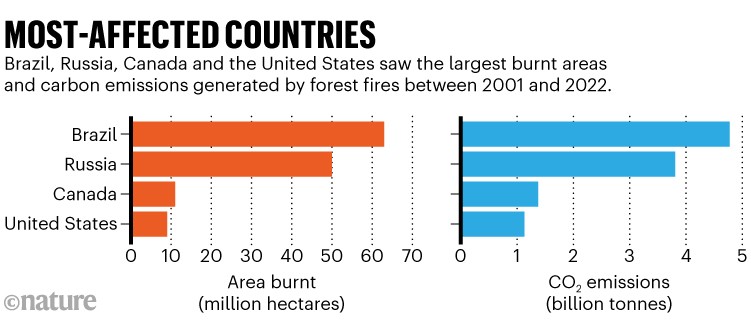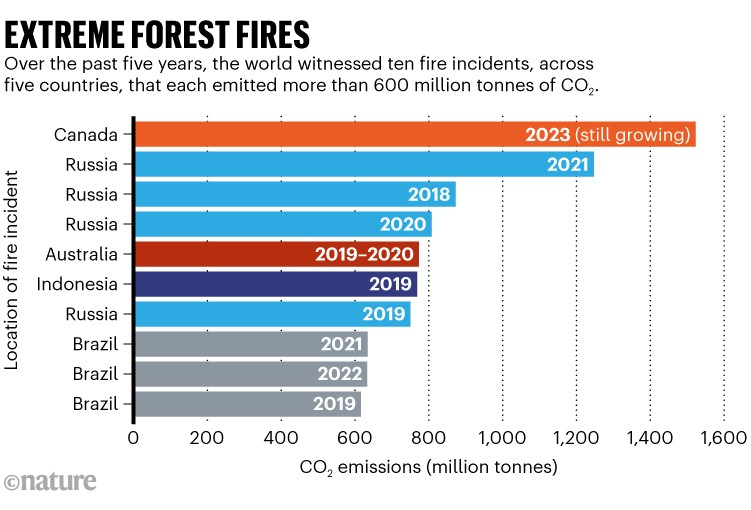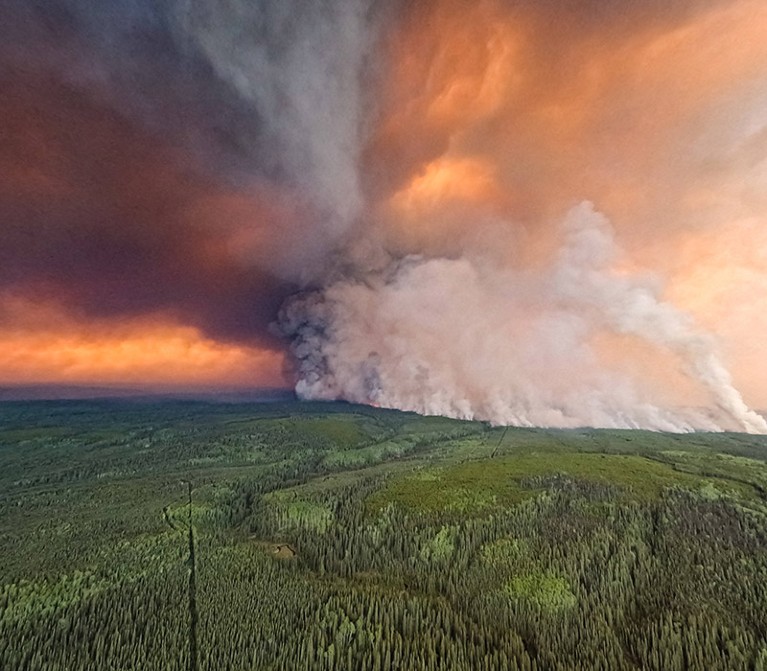Fires in Canada 2023. The country has experienced its worst wildfires on record, causing carbon dioxide emissions to reach record highs.Image source: Chine Nouvelle/SIPA/Shutterstock
Global forest fires emit 33.9 billion tons of carbon dioxide (CO2) between 2001 and 2022, according to a report by the Chinese Academy of Sciences (CAS). This makes CO2 Forest fires in Japan produce more emissions each year than from burning fossil fuels, and Japan is the world’s sixth-largest emitter of carbon dioxide.2 launcher. The surge in emissions is driven by the increasing frequency of extreme forest fire events.
Xu Wenru, a co-author of the paper and a landscape ecologist at the Shenyang Institute of Applied Ecology, Chinese Academy of Sciences, said that the term “extreme forest fires” usually refers to fires that burn a larger area than ordinary forest fires. , lasts longer and has a greater impact.
Xu and her colleagues found that the increase in emissions was driven primarily by intensifying fires at the edges of rainforests between 5 and 20 degrees south latitude, and in boreal forests above 45 degrees north latitude.
Emissions from northern forest fires in particular are growing rapidly, she said.
Xu said the increase in the number of forest fires is partly due to frequent heat waves and droughts caused by climate change. In turn, CO2 Gases emitted by forest fires contribute to global warming, creating a feedback loop between the two.
Humans also play a role. Xu said many forest fires are actually caused by humans, such as lighting fires for warmth at night, setting off fireworks or discarding cigarette butts.
Zhou Tianjun, a meteorologist at the Institute of Atmospheric Physics of the Chinese Academy of Sciences in Beijing, was shocked by the report. In particular, he pointed to a figure showing that, on average, the area of forest burned by fires between 2001 and 2022 was 11 times larger than the area of forest planted by humans during that period.
He said afforestation was considered an important way to increase carbon sinks, but the figure showed human efforts could be offset by natural forest fires.

Source: Chinese Academy of Sciences
record breaking fire
The report lists ten extreme forest fire events between 2018 and 2023, each emitting more than 600 million tons of carbon dioxide2 into the air (see countries most affected). They are concentrated in five countries with vast forests: Russia, Brazil, Canada, Australia and Indonesia.
Topping the emissions list are this year’s record-breaking fires that have devastated Canada, home to 28% of the world’s boreal forest. In 2023, more than 6,700 fires broke out across the country, burning a total of 18.5 million hectares, almost half the size of Norway.
CAS report finds Canadian forest fires have emitted more than 1.5 billion tonnes of carbon dioxide this year2 As of October (see Extreme Forest Fires), this exceeds the emissions from all forest fires in the country over the past 22 years combined.

Source: Chinese Academy of Sciences
The impacts of forest fires and other types of wildfires are expected to worsen around the world in the coming decades.
Yuhang Wang, an atmospheric scientist and professor at the Georgia Institute of Technology in Atlanta, said the report complements his work1 This suggests that by the 2050s, global burned area will increase by approximately 20% compared to the 2000s.
Even more surprising, Wang added, is that global fire carbon emissions are expected to double, highlighting that fires will become a more important source of carbon in the short term.
Wang Yi agreed with the report’s recommendation that countries should incorporate forest fire carbon emissions into national climate plans and establish a monitoring, reporting and verification system for such emissions.
Given the scale of emissions they produce, forest fires have become a source of carbon dioxide2 Xu said emissions cannot be ignored.
#Surge #extreme #forest #fires #fuels #global #emissions
Image Source : www.nature.com
